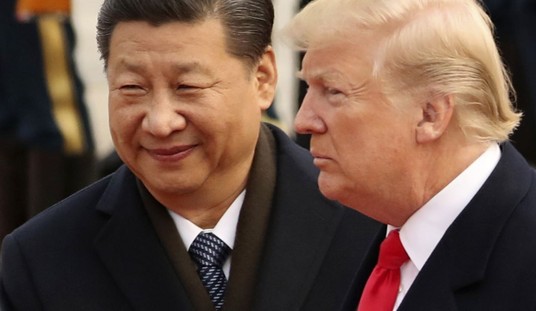With yet another terror attack in Europe continuing to unfold, the usual round of questions has begun, specifically seeking to determine if there isn’t something to be done which could prevent such horror shows. Our concerns are no doubt heightened by the revelation that two Americans are among the dead. The fact that the targets were an airport and a metro subway system came as no surprise. While not exclusive in the history of Islamic terror attacks, transportation hubs do seem to be the favored targets. The problem is that we’ve already increased security at the airports to the point where the TSA is nearly as unpopular as ISIS themselves, with travelers being put through huge inconvenience and delays in the hopes of catching one suspect in a hundred million who shows up planning evil.
Do we need to be doing even more? Sheldon H. Jacobson, professor of computer science at the University of Illinois, has an analysis of the possibilities at Government Executive this week. He likens the struggle between security forces and terrorists to a chess match which decidedly favors one side over the other. In the case of the United States, the TSA is engaged in an interminable game where they only way they can “win” is to keep on playing forever. The terrorists, on the other hand, only need to win a single match out of innumerable attempts to score a huge victory, immediately resetting the board to try again. The problem we’re facing with improving our chances is that no matter how large of a “security zone” we create around the airports, there will still be masses of people lining up someplace to make their flights. And that’s the crux of the challenge: the target of the terrorists really isn’t the planes… it’s the people.
The ultimate problem is that the kinds of events that occurred in Brussels and Los Angeles cannot be totally prevented. It is difficult to predict how nefarious intent will manifest. Should the security perimeter be pushed further out at airports? How far is sufficiently far? There are no limits or ends to such questions. And as Jeff Price, a travel-security expert and associate professor at Metro State University in Denver, was quoted by USA Today recently: “The point of a suicide bombing is to detonate in an area where there are a lot of people, so relocating the place where people gather or wait … just relocates where the bomber will go.”
When Osama bin Laden struck on 9/11 the target actually was the collection of planes the terrorists used because it instilled the maximum amount of terror. We’ve now largely closed down those opportunities for the attackers, but that doesn’t mean the airports aren’t still attractive. The boarding gate areas are now much safer, but as Jacobson notes, we’ve simply moved the place where people congregate out to the check-in area and the security screening waiting lines. I was reminded of this when I was flying back from CPAC this year. At Reagan airport I was in the TSA line waiting for about ten minutes when a woman who was roughly fifteen feet ahead of me did something strange. She had been in line with the rest of us for quite a while, but after making the final turn in the queue and being within roughly a dozen people of the agent she suddenly grabbed her carry on bag, exited the line and went to meet a man who was standing against the wall nearby and they left the building. The guys behind me immediately began talking about her, wondering why someone would do that. Nothing wound up happening, but I can tell you I was concerned.
Yet even if we could magically eliminate the threat at airports, those are hardly the only “soft targets” available. The terror attack on the Westgate Mall in Kenya is the incident which always comes to mind and gives me nightmares. I think of that horror show when I see places like the Mall of America being overrun by protests such as the Black Lives Matter disruptions. How easy was it for them to show up and essentially shut the place down? Granted, those incidents were mostly non-violent and represented more of a disruption to capitalism, but a far smaller number of people could arrive in a similar fashion with illegal weapons and improvised explosive devices and you’d end up with easily the same death toll we see at airports. If you put screening stations at the entryway to the nation’s malls you’d wind up with the same situation we see at the airports: shoppers would just be queued up outside waiting to get through the metal detectors.
Since I don’t have any bright ideas how to address this challenge, I took a look at what Jacobson was offering. It really wasn’t much that you could sink your teeth into and mostly involves knowing more about the enemy. (Emphasis added)
The number of soft targets in Europe and the US is far greater than the resources available to protect them. Addressing the motivations for such attacks is the most important prevention tactic any nation can utilize. Without such an approach, the events in Brussels will certainly be repeated at other cities around the world in the coming years.
Returning to our chess metaphor, the terrorist may assume the game tilts in their favor, since they need only win one game out of many to be effective. But in reality, there are no winners. The only hope for the future is to find a way to stop playing the game.
What does the author mean by addressing the motivations of the terrorists? I’d love a chance to ask Professor Jacobson just what we’re to do with that concept. It seems to me that there are basically two possible interpretations. The first is the rather obvious desire to use our knowledge of the enemy’s motivations to predict their next move. That makes a lot of sense, but in this case isn’t it rather obvious? They’re trying to kill as many people as possible using the least resources. We already know why they’re doing it since they broadcast their reasons on a regular basis. That’s not terribly helpful because we know we can’t turn every large congregation of people into a hard target.
The only other possibility is to suggest ways to change our own behavior to decrease the enemy’s incentive to attack in the first place. That explanation seems to fall in line with Jacobson’s closing comment about how we need to stop playing the game. Unfortunately, there is no path toward that goal which doesn’t involve essentially surrendering to the terrorists. As I said above, we already know why they want to kill us. They view America as the Great Satan, no matter which description the leaders of each terror group employ to describe us. Shall we simply change our foreign policy entirely to one of extreme isolationism and abandon our allies? Should we ban Christianity? I’m afraid that no matter how much we changed the fundamental fabric of our culture, the world’s sole remaining superpower would never pass muster with the Islamic threat. We have neither the need nor the desire to “better understand” our enemies who represent distilled evil walking the Earth in the guise of human beings. There is no solution in sight other than to exterminate them, no matter how daunting a task that may be. And so the fight continues.








Join the conversation as a VIP Member